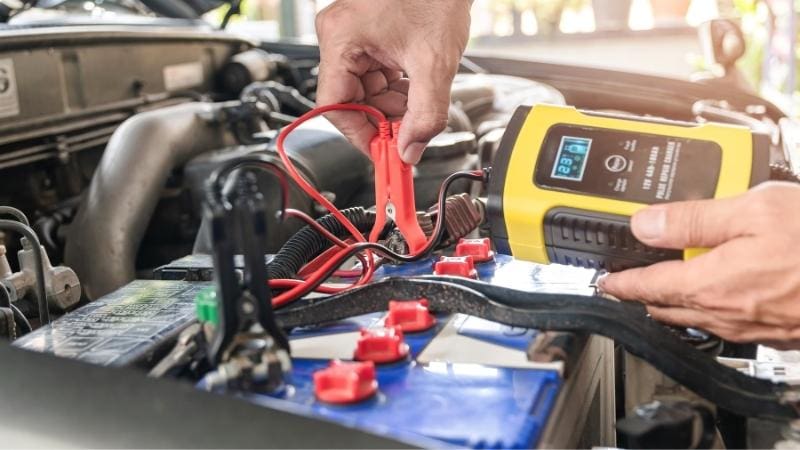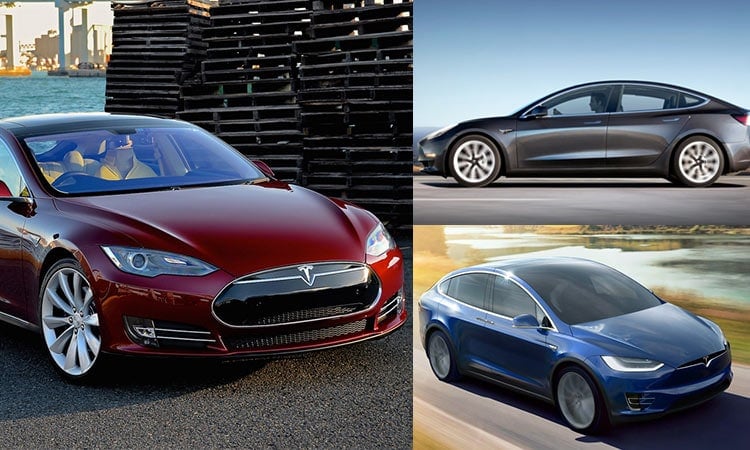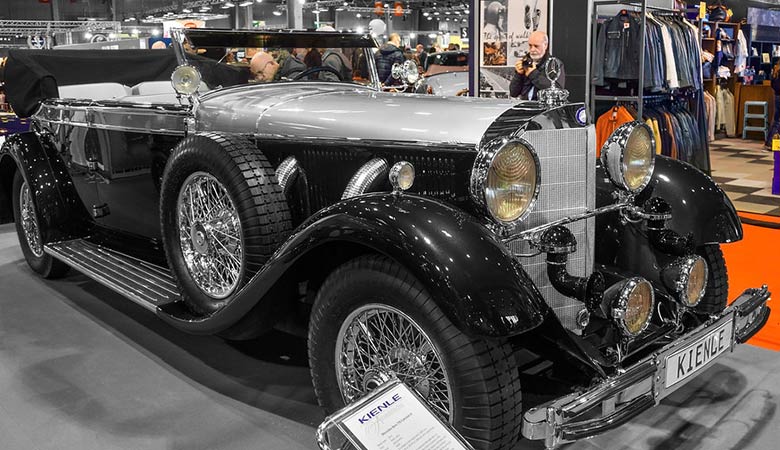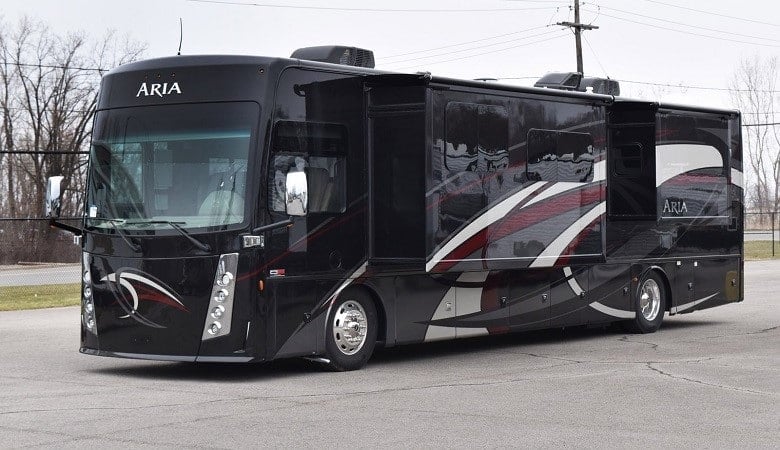Heavy batteries are best as they store a lot of energy compared to light batteries made of the same material. Therefore, if you need a lot of energy for your car, it is very clear that you should go for a heavy one.
However, if you are interested in saving weight, you must compromise between the energy your car needs and weight.
What Makes Car Batteries So Heavy?

The Number of Internal Cells
Without going into too much scientific detail, your battery is divided into sections called cells. These cells can only function at a specific rate and produce a given quantity of electricity.
You must align several of these cells together to generate greater electricity. The energy they produce is then collected and utilized throughout the vehicle.
A 12-volt battery typically contains six cells. You obtain 12.6 volts from these batteries, each of which provides roughly 2.1 volts.
There is no way to alter the chemical process or the required amount of
The amount of Charge

A fully charged battery weighs more than one that is entirely discharged. A battery that is completely discharged may only weigh 10 or 15 pounds. The weight of the chemical reaction is evident when compared to the 30–50 pounds that a charged one weighs.
This is due to the lead and acid in each of these cells, which must react to produce good power for your car.
They are designed with Convenience in Mind.
A design purpose must be in mind as the designer creates the plans. Making a practical product, producing the lightest possible choice, or maximizing power are all achievable goals.
Convenience is one of the main factors when it comes to automobile batteries. After all, everything you need to be concerned about is controlled by just two terminals.
I’m sure they could reduce the weight if they changed the battery’s design, added additional connectors, and created a less convenient setup, but at what cost?
They Are Lead Batteries
These are lead-acid batteries, as I just mentioned. If you have any knowledge of lead, you will be aware of how heavy this substance is.
Yes, batteries do contain real lead that generates power. The weight of lead is 0.41 pounds per cubic inch. For comparison, a zinc chunk of equal size weighs only 0.26 pounds. To create a lead-acid battery, you must use lead, a highly heavy and dense material.
They have high Amperage Requirements
The battery in your car has six cells, as I already said. I explained that there was a voltage need for this.
There is, however, an amperage need. The amount of electricity that can flow across the circuit is indicated by amps. Higher amperage indicates more power is available for all the circuit’s components.
In this instance, I’m referring to users like your automobile’s audio, lights, and HVAC system. Each battery cell must be larger to provide more amps. If you multiply that by six, the battery will grow much larger and heavier.
It Has to Start in the Cold

The weather has an impact on amperage as well. The amps a battery can generate decrease as the temperature drops.
We can’t all stay all winter indoors simply because our cars’ batteries die. The battery must be built to provide even more amps to avoid this. Since the system was overdesigned, it will drop to an appropriate level when it gets cold, and the overall amperage decreases.
This is one method to keep your battery from dying in the winter.
Manufacturers Sacrifice Weight for Price
There are undoubtedly more effective ways to produce lightweight batteries. For instance, lithium-ion batteries are much lighter. On the contrary, they are also much less expensive.
You would require an extremely expensive component if you wanted to maximize the energy source for autos.
A Mercedes-back Benz’s battery was being installed by a mechanic, raising the battery by the handles. Manufacturers have chosen to concentrate on lower prices since they build cars for the average consumer. Batteries will consequently grow and get heavier.
This choice, in my opinion, is obvious. If a bigger battery saved tens of thousands (or perhaps hundreds of thousands) of dollars, I would gladly accept it.
They are designed with a lot of Metal.
The batteries must ensure everything is contained because the chemical reaction is hazardous. Using a lot of powerful metals is one approach to achieve it.
Inside the battery, metal makes up the majority of the material. Plastic makes up the external skin and the handles.
Metal, like lead, is typically exceedingly heavy. Steel is significantly heavier than typical polypropylene plastics by a factor of more than 7. For instance, if a piece of plastic that weighs 5 pounds was built of metal, it would weigh upwards of 35 pounds.
Compared to these lighter alternatives like plastic, metal is significantly stronger. It implies that it won’t break and leak acid even if anything hits your battery.
They are made to Survive in Tough Environments.
Speaking about difficult circumstances, these batteries must be able to withstand them. They are struck, knocked around, drenched in the rain, and subjected to subzero temperatures.
It would be much lighter if battery engineers had to worry about creating a device that can withstand sitting on a table at normal temperature without ever being hit.
A robust and adaptable battery is necessary when all these various surroundings are added. As a result, the battery grows stronger, larger, and heavier.
They Need to Be Over-engineered
These batteries need to be over-engineered, to put it simply. This is a reference to both the challenging environments in which they operate and the ongoing strain on the batteries. Furthermore, their amperage is greater than it should be. They need to be more durable to withstand regular driving.
In this instance, over-engineering leads to the utilization of a great deal of additional material and weight. The battery would be lighter if the engineers had chosen the simple solutions, but it would malfunction more frequently.
They Are Always Being Used
You should also keep in mind that your battery is always active. When you’re driving, things are constantly draining the battery’s power.
If the battery in your automobile couldn’t provide electricity quickly enough, several car components would break down. Naturally, this isn’t a good design. Engineers make sure the battery always produces more energy than it consumes when operating in conjunction with the alternator to prevent this.
The batteries will thus be larger and heavier.
How Does the Weight of a Car Battery Influence its performance?

Your vehicle’s performance may be more affected than you think by the weight of the car battery. It is best for your car if you buy one roughly the same size or weight as the outdated model.
The distribution of battery weight can greatly impact how well your car runs, regardless of the type of vehicle. It might not operate effectively if the battery is too heavy, especially if your car is small.
If you’re worried, a battery that is too heavy could be just as harmful to your car as one that is too light.
How do you Determine The Weight Of Your Car Battery?
When calculating the battery’s weight, the size of the battery is crucial.
Vehicles with larger engines that need more energy to operate properly often use larger batteries. The large automobile battery weight in a vehicle like that may exceed 40 pounds.
The product’s instructions contain information on the size of the battery category for your car. If you can’t locate it, you can utilize the online reference instructions provided by dealers on their website to determine the ideal battery pack size for your car.
The manufacturer will typically provide comprehensive details regarding the group sizes of typical batteries.
You can rely on this information to determine the battery’s weight. For instance, a size 65 automobile is a large-bodied Ford, Lincoln, or Mercury that weighs 40 pounds.
Check your Battery Type
The customer may learn the battery’s weight by looking at the battery type.
For instance, Starting, Lighting, and Ignition are examples of the fundamental type. These are typical car batteries that are widely available and easily offer overall power. These batteries weigh somewhere between 40 and 60 pounds when you buy them.
Lithium-ion or Li-ion batteries are also among the most popular options for people who utilize electric cars. The main reason is that they have a longer lifespan than others and can handle a variety of automobiles. Additionally, this battery has a unique quality in that it comes in various weights.
Lithium-Ion group 24 weighs 25 pounds, as an illustration. On the other hand, group 27 weighs 35 pounds, while group 8D of the same sort weighs 72 pounds.
Check your Battery Label/packaging.
Examining the label or packing on the battery will reveal the weight of the battery. The label will typically inform you of the battery’s weight and other pertinent information.
You can refer to the agent’s manual if the label is damaged.
How heavy should an average car battery weigh?
A typical 12V car battery weighs about 40 pounds. However, depending on the voltage, fluid level, and car model, batteries can weigh between 25 and 60 pounds. A battery made of lead will also weigh more than a battery made of lithium.
Conclusion
The weight of a car’s battery can have a big effect on how well it runs overall. The reserve capacity is essential, even though it is not as crucial as cranking amps, cold-cranking amps, or reserve capacity in determining how fast a car is. Generally speaking, having a lighter battery for your car is a good choice because it will facilitate fast driving.
For some vehicles, especially electric automobiles, a heavier type of car battery would be perfect. Because of this, it’s crucial to take into account a car’s battery weight while evaluating its performance in a rally.






